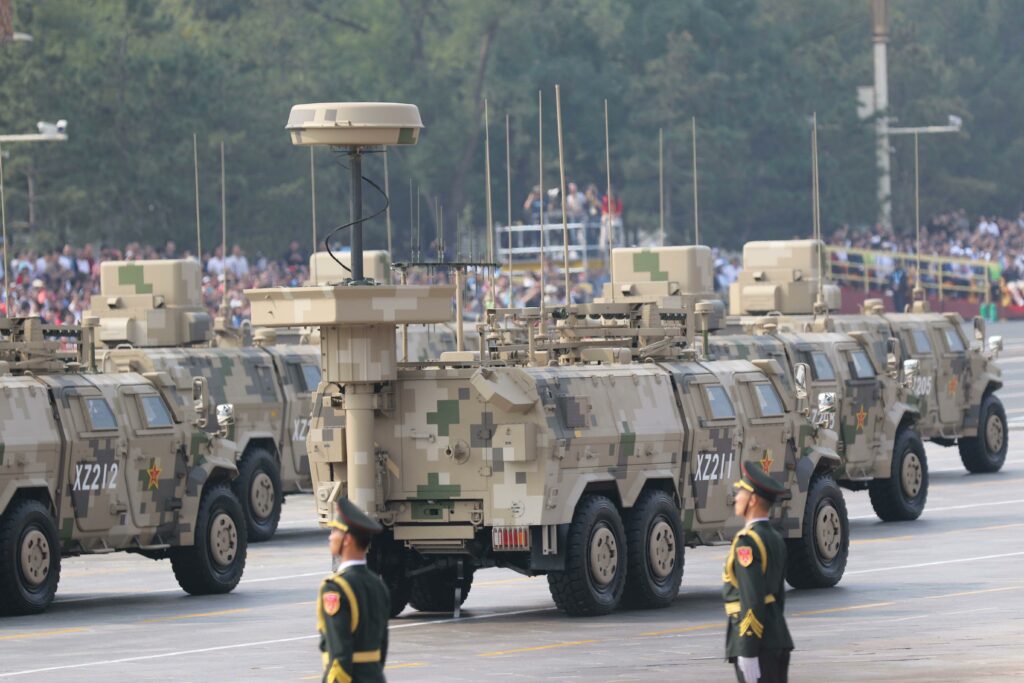In the realm of futuristic warfare, the Chinese military’s latest development has raised eyebrows and sparked concerns among lawmakers in Congress. Picture this: rifle-toting robotic dogs, equipped with cutting-edge technology and designed to enhance combat capabilities on the battlefield. As these mechanized canines become a reality, questions arise regarding the implications of this advancement on the global stage. Let’s delve into the details and explore the implications of China’s foray into the world of militarized robotics.
Robot Dogs Pose National Security Threat
In a recent demonstration by the Chinese military, rifle-toting robot dogs have sparked concerns in Congress about the potential national security threat they pose. These four-legged robots, equipped with a variety of weapons, are capable of complex movements and autonomous decision-making, raising fears about their potential use in combat scenarios.
The development of these robot dogs by China has raised questions about the implications for future warfare and the need for international regulations on the use of autonomous weapons. With the ability to operate in a pack and coordinate their actions, these robot dogs could potentially outmatch human soldiers in certain situations, leading to calls for increased oversight and scrutiny of these advanced military technologies.
Concerns Over Chinese Militarys Advanced Technology
In a recent congressional hearing, lawmakers expressed growing concerns over the Chinese military’s use of advanced technology, particularly the deployment of rifle-toting robot dogs. These robotic canines, equipped with guns and surveillance equipment, have raised alarms among members of Congress who fear the implications of such technology in the hands of a potential adversary.
The development of these futuristic weapons has underscored the urgency for the United States to prioritize its own technological advancements to counter potential threats posed by China’s military capabilities. Lawmakers are calling for increased funding and research in cutting-edge defense technologies to ensure that the U.S. remains competitive in the global arms race.
Congress Urged to Increase Funding for Defense Research
Concerns have been raised in Congress following reports of the Chinese military developing rifle-toting robot dogs. The deployment of these futuristic weapons has led many lawmakers to call for increased funding for defense research to ensure that the United States remains at the forefront of military technology.
**Key points discussed in Congress include:**
- The potential implications of autonomous robot dogs on the battlefield
- The need for the U.S. to invest in cutting-edge defense technology
| Issue | Discussion |
|---|---|
| Robot Dogs | Concerns over the use of rifle-toting robot dogs by the Chinese military |
| Defense Research Funding | Call for increased funding to stay ahead in military technology |
Potential Regulations to Address Emerging Threats
The recent development of rifle-toting robot dogs by the Chinese military has sparked concerns among members of Congress about the potential threats posed by such advanced technology. These robotic canines, equipped with rifles and other weaponry, could potentially be used for surveillance, reconnaissance, and even combat missions, raising questions about the need for regulations to address these emerging threats.
As these robot dogs become more sophisticated and widespread, there is a growing consensus in Congress that regulations are needed to ensure responsible use of this technology. Some possible regulations that have been proposed include:
- Licensing requirements: Requiring a license to own or operate military-grade robotic technology.
- Limitations on use: Restricting the deployment of weaponized robot dogs in certain settings or scenarios.
- Monitoring and oversight: Implementing strict monitoring and oversight mechanisms to prevent misuse of these autonomous weapons.
Final Thoughts
As the Chinese military continues to invest in cutting-edge technologies such as rifle-toting robot dogs, concerns are being raised in Congress about the implications for future warfare. The development of autonomous weapons raises important ethical and strategic questions that must be carefully considered. As technology rapidly advances, it is crucial for policymakers to engage in thoughtful discussions and establish clear guidelines to ensure the responsible use of these new tools in the battlefield. Only through careful consideration and collaboration can we navigate the complexities of modern warfare and safeguard human rights in the process.


